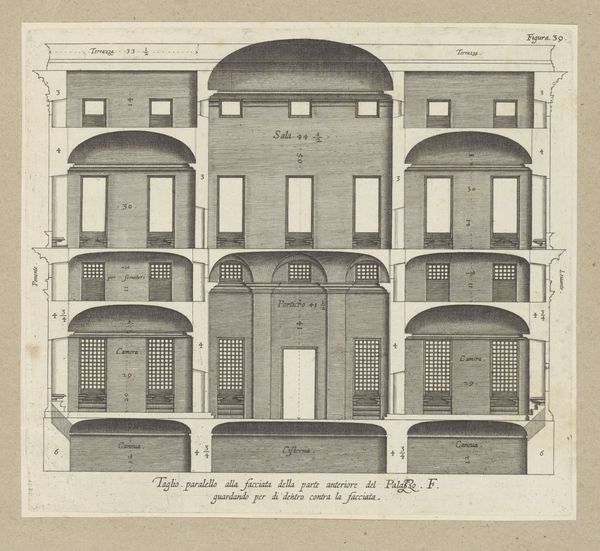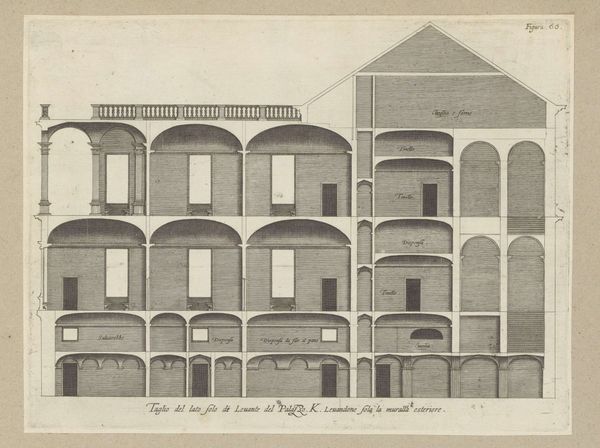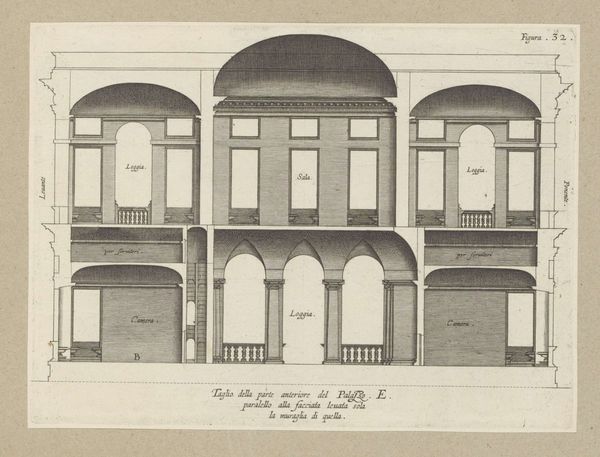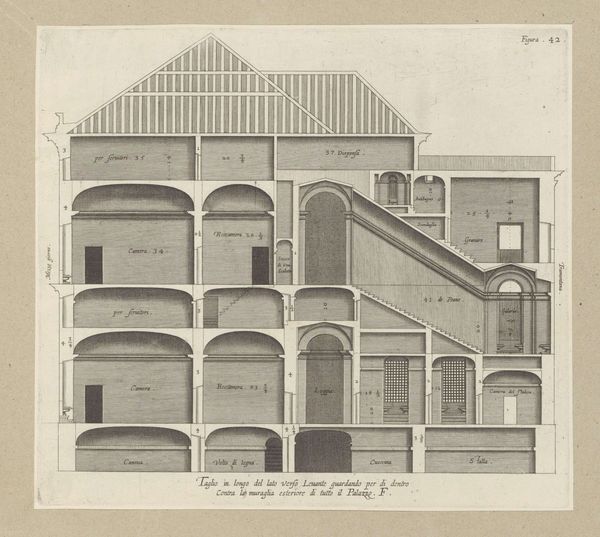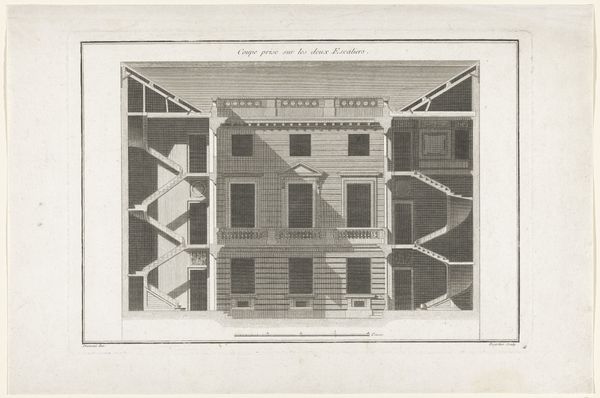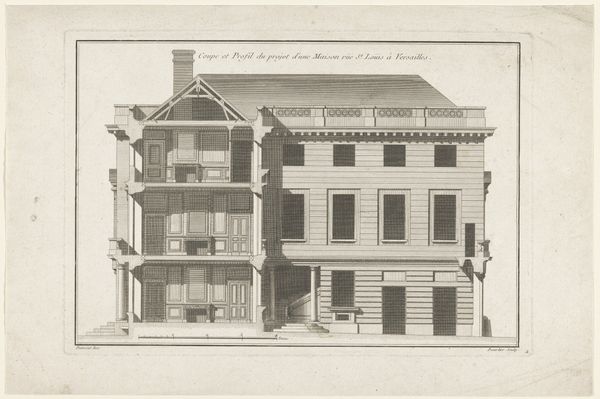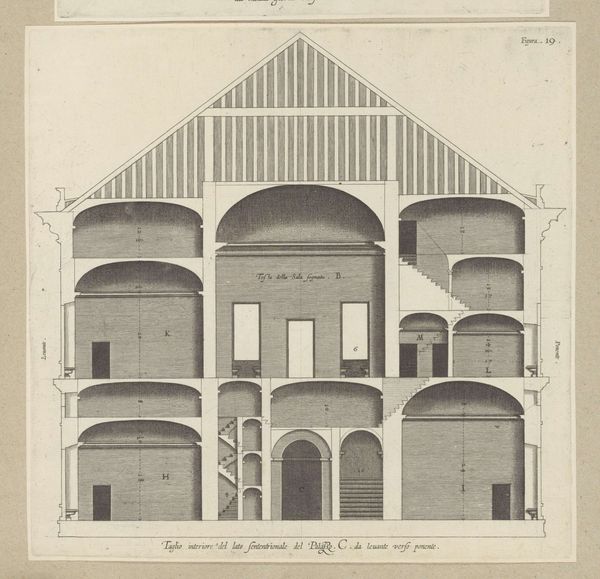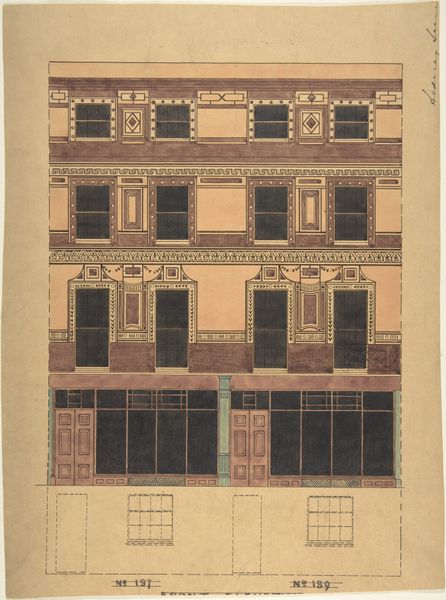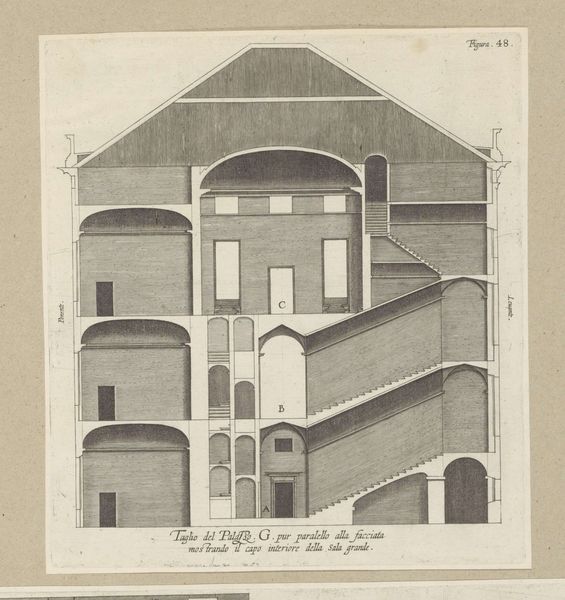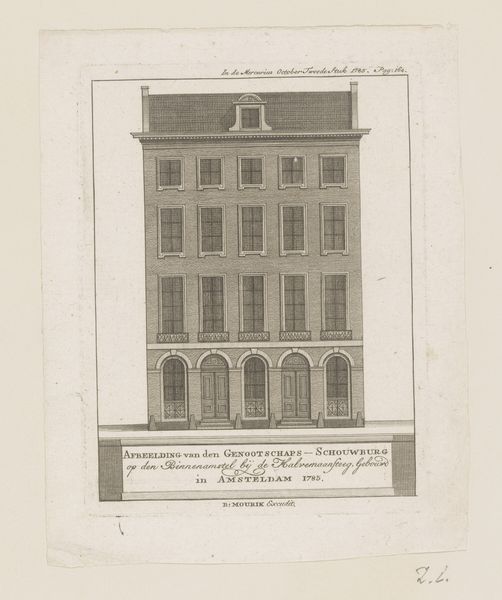
Dwarsdoorsnede van het Palazzo Interiano Pallavicini te Genua 1622
0:00
0:00
nicolaesryckmans
Rijksmuseum
drawing, print, engraving, architecture
#
drawing
#
baroque
# print
#
perspective
#
form
#
geometric
#
line
#
cityscape
#
engraving
#
architecture
Dimensions: height 208 mm, width 210 mm, height 583 mm, width 435 mm
Copyright: Rijks Museum: Open Domain
Curator: Standing before us is Nicolaes Ryckmans' "Cross-section of the Palazzo Interiano Pallavicini in Genoa," created in 1622. It’s an engraving, a detailed architectural drawing of a grand residence. Editor: My immediate reaction is one of coolness, almost clinical. The cool grey of the engraving emphasizes the rigid geometry, a series of rectangular spaces methodically arranged. Curator: Indeed. Ryckmans presents us with a window into the societal structures of the 17th century. These palazzos were not just homes; they were power statements. The cross-section exposes the hierarchy within, doesn't it? From grand saloons to presumably smaller, private "camera" spaces. Editor: Absolutely. We see the intersection of domestic life and public display. The façade, hinted at by the text, would have projected an image of power and wealth. Ryckmans gives us access to the behind-the-scenes organization that enabled such a projection. How does this arrangement support or undermine certain power dynamics based on class, gender, and so forth? Curator: Think of the circulation patterns! Servants likely used different corridors, moving through unseen spaces to maintain the seamless illusion of aristocratic life. Ryckmans’ perspective is a powerful commentary of life in that time. The very act of diagramming it, ordering its form through line, brings a new focus on the public role of this residence. Editor: Right. And even the act of printing and distributing these images reinforces power structures. These images can provide new understandings about not only Italian homes, but architectural approaches that would inform construction far outside of Italy. I’m struck by how such precise architectural drawings were themselves tools for spreading ideas of social and political power. It also reveals some Baroque themes with the focus on perspective. Curator: Ryckmans offers us more than just an architectural document. Editor: Exactly! This piece reveals how domestic architecture became a potent tool for shaping, enacting, and contesting socio-political realities.
Comments
No comments
Be the first to comment and join the conversation on the ultimate creative platform.
